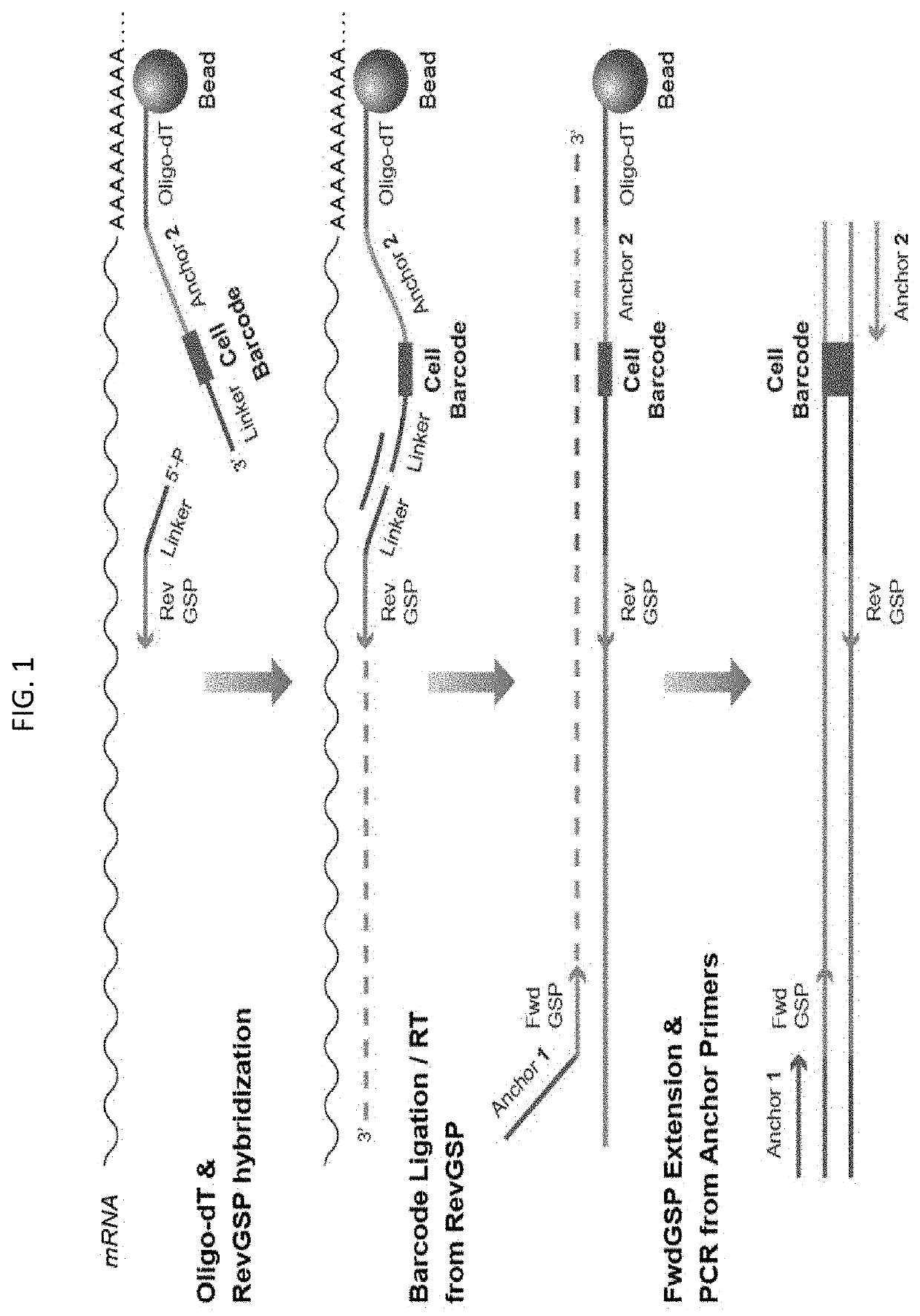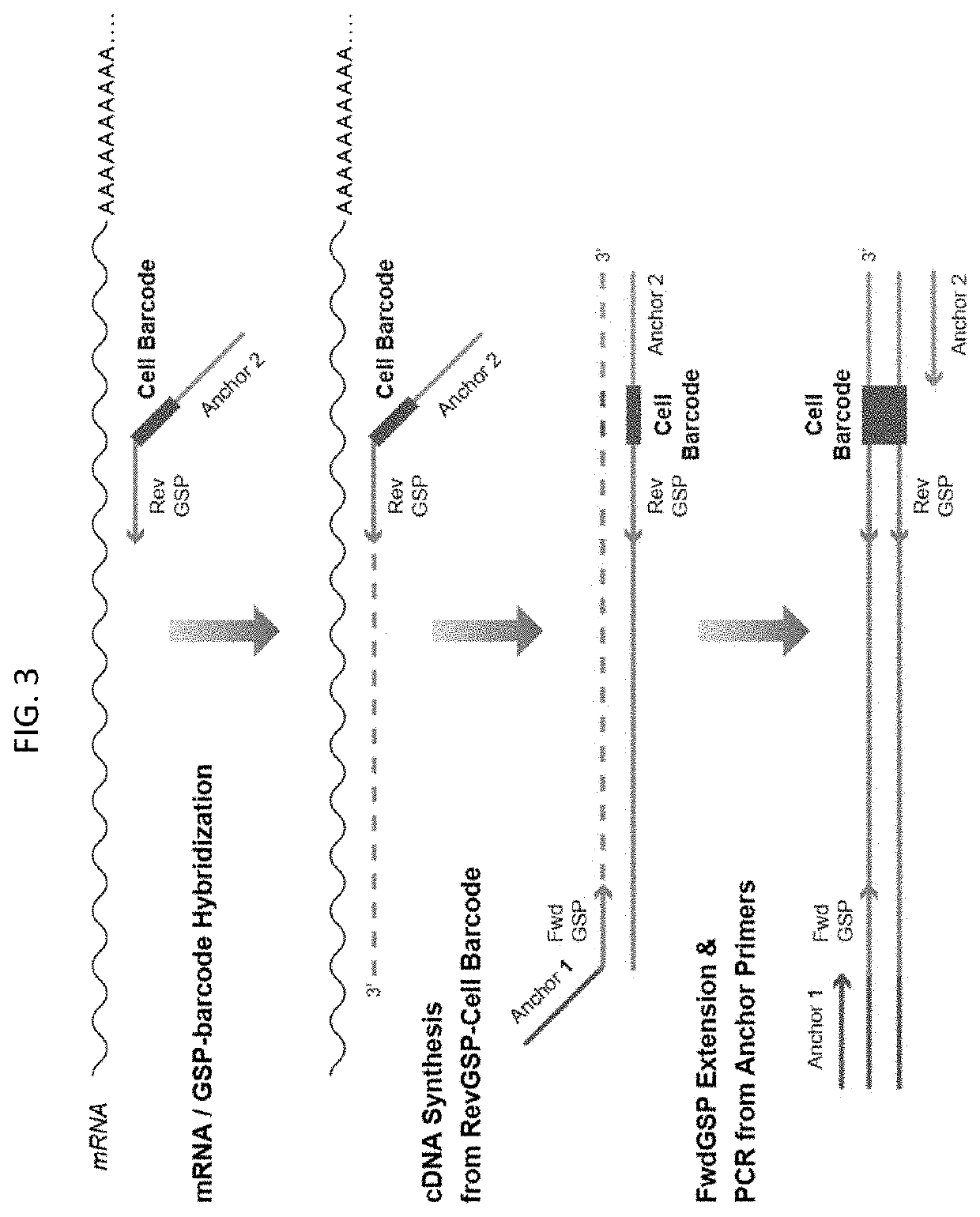Multiplex preparation of barcoded gene specific DNA fragments
a dna fragment and multi-functional technology, applied in the field of multi-functional preparation of barcoded gene specific dna fragments, can solve the problems of unwanted side product formation, uneven or no amplification of some target sequences, cross hybridization,
- Summary
- Abstract
- Description
- Claims
- Application Information
AI Technical Summary
Benefits of technology
Problems solved by technology
Method used
Image
Examples
Embodiment Construction
[0022]Methods of preparing a plurality of sample-barcoded anchor-domain-flanked gene specific deoxyribonucleic acid (DNA) fragments from a template nucleic acid, e.g., ribonucleic acid (RNA), sample are provided. Aspects of the methods include employing a set of gene specific primer pairs, wherein each pair of gene specific primers is made up of a forward primer and a reverse primer, at least one of which includes a sample barcode domain. The methods find use in a variety of different applications, including high-throughput sequencing, e.g., expression profiling, applications, including of small biological samples, e.g., single-cells.
[0023]Before the present invention is described in greater detail, it is to be understood that this invention is not limited to particular embodiments described, as such may, of course, vary. It is also to be understood that the terminology used herein is for the purpose of describing particular embodiments only, and is not intended to be limiting, sinc...
PUM
| Property | Measurement | Unit |
|---|---|---|
| composition | aaaaa | aaaaa |
Abstract
Description
Claims
Application Information
 Login to View More
Login to View More - R&D
- Intellectual Property
- Life Sciences
- Materials
- Tech Scout
- Unparalleled Data Quality
- Higher Quality Content
- 60% Fewer Hallucinations
Browse by: Latest US Patents, China's latest patents, Technical Efficacy Thesaurus, Application Domain, Technology Topic, Popular Technical Reports.
© 2025 PatSnap. All rights reserved.Legal|Privacy policy|Modern Slavery Act Transparency Statement|Sitemap|About US| Contact US: help@patsnap.com



